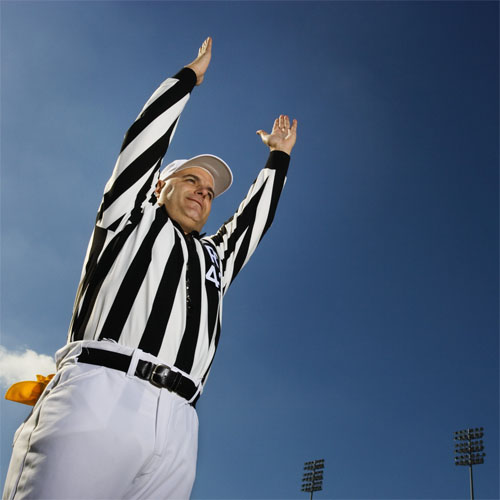
Zebra
Somewhere in, NJ
Male, 62
I've officiated football for over 30 years, now in my 26th on the college level. I've worked NCAA playoffs at the Division II and III level. In addition, I've coached at the scholastic level and have been an educator for over 35 years. I have no interest whatsoever in being an NFL official! Ever!
Any rule - in the appropriate spot - can and should be called. The situations that have been described, while possibly helping the runner, just aren't so clear cut as to be fouls (e.g. pushing the pile). Now, that being said, there may be situations (which I cannot nor do I choose to think of at this time) when a player might be "helped" and that should be called. To your point about coaching it, I'm not sure what you're going to tell your players to do. And if you coach them to do something and it gets called, that's on you. I'm not sure what is going on that it is being called and is generating such angst. But it really isn't worth continuing; you're right - the horse is dead; it's time to dismount.
There's a saying among officials: Don't make it the call of the game. Your calls should be solid, clear, obvious. If it's there, call it. Pushing the runner in a pile of bodies? Not obvious, not clear. Why is it never called? It just isn't a solid call. And I don't want to make the next week's training film as the guy who called helping the runner.
I'm not sure why you reference the 3rd and 4th down interval. In college, and as far as I know in the NFL, when the play ends (in this case the pass is incomplete) the 40 second clock starts. If it expires, it's a delay on the offense.
yes
Programmer
 Is Mark Zuckerberg really a genius programmer? Or was he just lucky?
Is Mark Zuckerberg really a genius programmer? Or was he just lucky?
School Teacher
 How do you see parents failing in their children's education?
How do you see parents failing in their children's education?
Casino Marketer
 What's the most unethical thing you've seen casinos do to "part you from your dollars?"
What's the most unethical thing you've seen casinos do to "part you from your dollars?"
Based on what you're writing now, the Ref will give these options to the defense:
2nd and goal from the 25 (declining the penalty, take the result of the play - the sack) OR
1st and goal at the 19 (accept the 10 yard holding penalty from the previous spot - College rule)
I'm not sure I can explain it any other way.
This was mentioned a few questions ago. If you intercept a pass inside the 5 (at least in college, probably NFL, too) and then go into the endzone where you're tackled, it comes back out to the spot of the interception. That is momentum. If it is intercepted at the ten, as you describe, and you take it into the endzone, it is your fault the ball is there, and that will be a safety.
I have no idea what you're talking about. If you're an unhappy fan, that's the way it goes. If you're a bettor - assuming, of course, that you made a legal sports bet in Nevada or Delaware - that's why they call it gambling. Beyond that, I don't know what you're getting at. How do I get justice for an entire Congress that's lost its mind?
-OR-
 Login with Facebook
Login with Facebook (max 20 characters - letters, numbers, and underscores only. Note that your username is private, and you have the option to choose an alias when asking questions or hosting a Q&A.)
(A valid e-mail address is required. Your e-mail will not be shared with anyone.)
(min 5 characters)
By checking this box, you acknowledge that you have read and agree to Jobstr.com’s Terms and Privacy Policy.
-OR-
 Register with Facebook
Register with Facebook(Don't worry: you'll be able to choose an alias when asking questions or hosting a Q&A.)